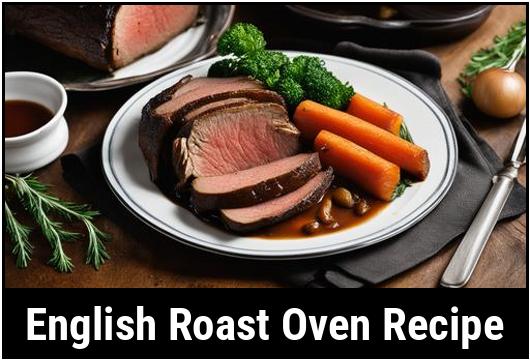
English Roast Oven Recipe: A Delicious Culinary Experience
Are you ready to embark on a delightful culinary journey that will tantalize your taste buds and leave you craving for more? Look no further than the English roast oven recipe! This traditional British dish is a feast for both the eyes and the palate, with its succulent meat, savory aromas, and mouthwatering flavors. In this comprehensive guide, we will walk you through every aspect of this dish, from the science behind its preparation to cleaning, selection, and preparation tips. So let’s dive right in!
The Science of English Roasting
To truly appreciate the art of cooking an English roast in the oven, it’s crucial to understand the science behind it. The oven’s dry heat and enclosed environment work together to provide a slow and even cooking process, ensuring that the meat remains tender and juicy while developing a stunning crust. This method allows the connective tissues to break down, resulting in a melt-in-your-mouth texture.
Selecting the Perfect Cut
When it comes to an English roast, there are several cuts of beef to choose from, but the most popular and readily available one is the beef rib roast. This cut comes from the rib section near the backbone, known for its marbling, tenderness, and exceptional flavor.
When selecting your meat, opt for a roast with a generous amount of fat marbling. This fat will render during cooking, keeping the meat moist and adding depth to the final dish. Look for a roast with a bright red color, as this indicates freshness. Additionally, consider the size of the roast based on your needs and the number of guests you’ll be serving.
Cleaning and Preparing Your Oven
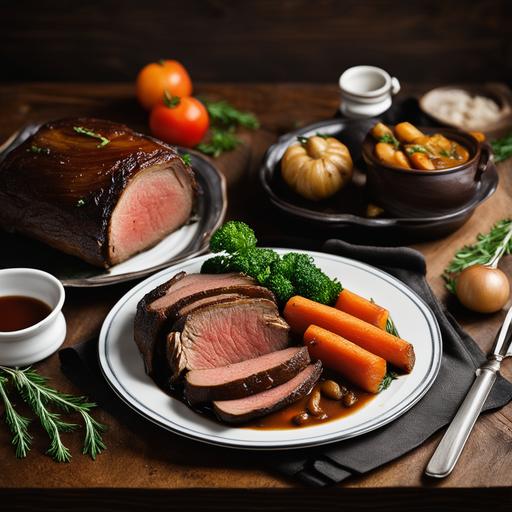
Before you embark on your roasting adventure, it’s essential to ensure that your oven is clean and ready for action. Start by removing any lingering food residues or grease from the previous cooking sessions. A mix of warm water, mild detergent, and a non-abrasive sponge should do the trick.
Next, pay attention to the oven racks and trays. Remove them from the oven and clean them separately with warm soapy water. Make sure to dry them thoroughly before placing them back into the oven. Finally, give the oven door and exterior a wipe down to remove any smudges or spills.
Preparing the Roast: Tips and Techniques
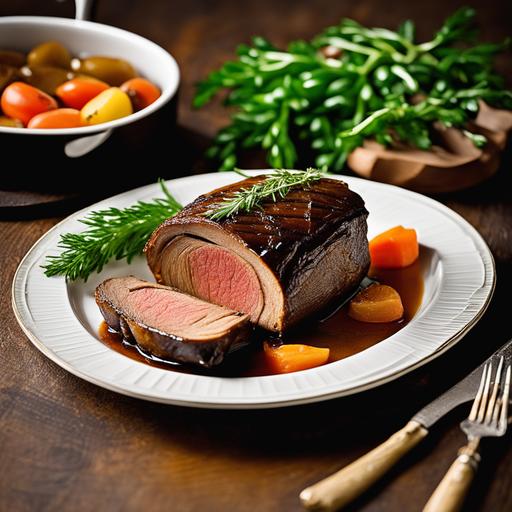
Now that your oven is sparkling clean, it’s time to dive into the nitty-gritty of preparing the roast itself. Follow these tips and techniques to ensure a mouthwatering result:
1. Let the Roast Reach Room Temperature
Remove the roast from the refrigerator at least an hour before cooking to allow it to reach room temperature. This will promote even cooking throughout the roast.
2. Season Generously
Befitting its name, English roast calls for a hearty dose of seasoning. Combine salt, pepper, garlic powder, and other preferred seasonings in a small bowl and massage it into the meat, ensuring every nook and cranny is coated.
3. Searing for Flavor
To enhance the flavor and texture of the roast, consider searing it before placing it in the oven. Heat a skillet or cast-iron pan over medium-high heat and sear each side for a few minutes until a golden brown crust forms.
4. Choosing the Right Pan
Select a roasting pan with high sides and sturdy construction, such as stainless steel or cast iron. This will help to retain heat and prevent any drippings from spilling over in the oven.
5. Creating a Flavorful Bed of Vegetables
To elevate the flavors even further, create a bed of aromatic vegetables such as carrots, onions, and celery at the bottom of the roasting pan. These vegetables will infuse the meat with their subtle flavors while also providing a delicious side dish option.
Variations and Doneness Checks
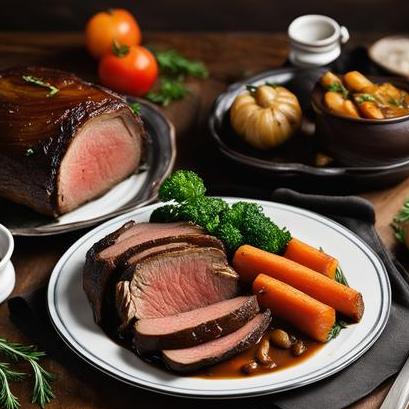
Now that you have mastered the basics of preparing an English roast, it’s time to explore some variations and techniques for testing the roast’s doneness. Here are a few ideas to experiment with:
1. Herb Crust
For a fragrant twist, consider creating an herb crust for your roast. Mix chopped herbs like rosemary, thyme, and parsley with breadcrumbs and olive oil. Press this mixture onto the surface of the roast before cooking it in the oven.
2. Yorkshire Puddings
No English roast is complete without savory Yorkshire puddings. These delightful, puffy pastries are made from a simple batter of eggs, flour, and milk. Pour the batter into a hot muffin tin and bake until golden brown and crisp.
Checking for Doneness
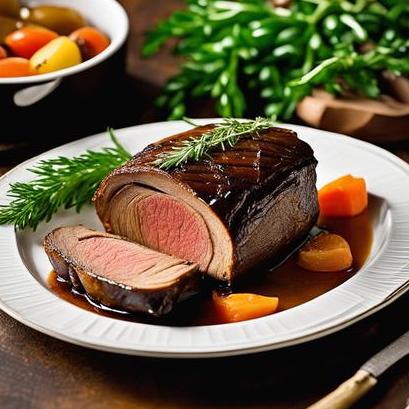
While following specific cooking times and temperatures is essential, nothing beats the accuracy of a good meat thermometer. Insert the thermometer into the thickest part of the roast without touching any bones, and ensure it reaches the desired internal temperature. For a medium-rare roast, aim for around 135°F (57°C).
Recipe: English Roast Oven Perfection
Now, armed with the knowledge of the science, preparation, and variations, let’s dive into the quintessential English roast oven recipe:
Ingredients:
-
4 pounds (1.8 kg) beef rib roast
-
Salt and pepper to taste
-
4 cloves of garlic, minced
-
2 tablespoons olive oil
Instructions:
-
Preheat the oven to 350°F (175°C).
-
Season the beef rib roast generously with salt, pepper, and minced garlic, ensuring an even coating.
-
Heat olive oil in a skillet over medium-high heat. Sear each side of the roast until a golden brown crust forms.
-
Transfer the roast to a roasting pan, placing it on the bed of vegetables.
-
Insert a meat thermometer into the thickest part of the roast, without touching any bones.
-
Place the pan in the preheated oven and roast until the desired internal temperature is reached (around 135°F (57°C) for medium-rare).
-
Once cooked, remove the roast from the oven and tent it with aluminum foil. Allow it to rest for at least 20 minutes to let the juices redistribute.
-
Carve the roast into thin slices and serve alongside the flavorful roasted vegetables.
Overcooking and Undercooking: Potential Pitfalls
As with any culinary endeavor, there is always the possibility of overcooking or undercooking your English roast. Here are a few indicators to watch for:
Overcooking
An overcooked roast tends to be dry and lacks the desired tenderness. To avoid this, make sure to monitor the internal temperature of the roast regularly. Remove it from the oven as soon as it reaches the desired level of doneness.
Undercooking
Undercooked meat can be a disappointment, especially when aiming for a succulent roast. If you find yourself in this predicament, return the roast to the oven at a slightly lower temperature and continue roasting until the desired internal temperature is reached.
Conclusion
Congratulations! You have now embarked on an epic journey through the world of English roast oven recipes. From understanding the science behind it to selecting the perfect cut, cleaning your oven, and preparing with finesse, you are well-equipped to become a master of this culinary delight. So gather your ingredients, unleash your creativity, and dive into the wonderful world of English roast oven perfection. Happy cooking!
Sources
FAQS On English Roast Oven Recipe
What Is An English Roast?
An English roast is a delicious and traditional beef roast that is slow-roasted in the oven until it’s tender and juicy. This recipe usually involves cooking a rump or sirloin joint of beef with vegetables such as carrots, onions, and potatoes for a classic one-pot meal.
What Temperature And Time Should I Cook An English Roast At?
The suggested temperature for an English roast is 375°F (190°C), and the suggested cooking time is around 20 minutes per pound of meat for medium-rare, but this can vary depending on the joint’s size and the desired doneness level.
What Are Some Good Seasoning Suggestions For An English Roast?
A great seasoning blend for an English roast includes fresh herbs like thyme, rosemary, and garlic, as well as salt and black pepper. Other seasonings like smoked paprika, mustard powder, and Worcestershire sauce can also add a depth of flavor and enhance the meat’s natural taste.
Should I Sear The Meat Before Cooking An English Roast?
It’s not necessary to sear the meat before cooking an English roast, but it can add extra texture and flavor to the finished dish. To do this, heat some oil in a skillet over high heat and brown the meat on all sides before transferring it to a roasting pan.
How Do I Know When My English Roast Is Done?
The best way to know if an English roast is cooked to perfection is by using a meat thermometer. For medium-rare, insert the thermometer into the thickest part of the meat, not touching any bone, and check that it reaches a temperature of 145°F (62°C). Let the roast rest for a few minutes before slicing it to ensure a juicy and tender meal.



